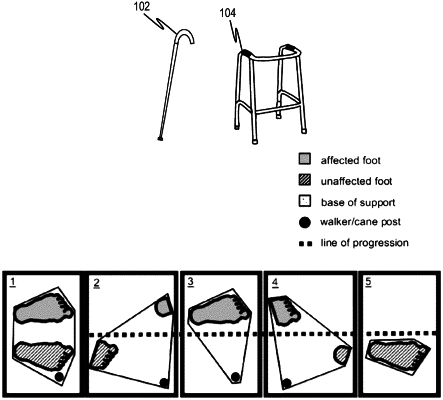| CPC A61H 3/04 (2013.01) [A61H 3/00 (2013.01); A61H 3/02 (2013.01); B25J 11/008 (2013.01); G05D 1/0236 (2013.01); G05D 1/0244 (2013.01); G05D 1/12 (2013.01); G06F 3/014 (2013.01); A61H 2003/043 (2013.01); A61H 2201/0157 (2013.01); A61H 2201/1635 (2013.01); A61H 2201/1659 (2013.01); A61H 2201/5007 (2013.01); A61H 2201/5046 (2013.01); A61H 2201/5061 (2013.01); A61H 2201/5071 (2013.01)] | 20 Claims |

|
1. A mobile assistant platform for helping a user with movement disabilities, comprising:
a robotic vehicle;
a two-link arm having a lower shaft that extends upwards with respect to the robotic vehicle and is connected to the robotic vehicle via a first joint, an upper shaft that extends upwards with respect to the lower shaft and is connected to the lower shaft via a second joint, and a handle connected the upper shaft, wherein the handle is positioned at a height suitable for a walking cane, and wherein the handle is movable by means of said two-link arm, to multiple heights in a range around said height suitable for a walking cane;
a digital processor connected to the robotic vehicle to control it;
at least one force sensor in at least one of the handle and the two-link arm connected to apply force signals the digital processor; and
a user-position and orientation detecting device connected to apply configuration signals to the robotic vehicle, the user-position and orientation detecting device being physically connected to one or more of the robotic vehicle, a region outside the robotic vehicle, or on the user, alone or in combination.
|